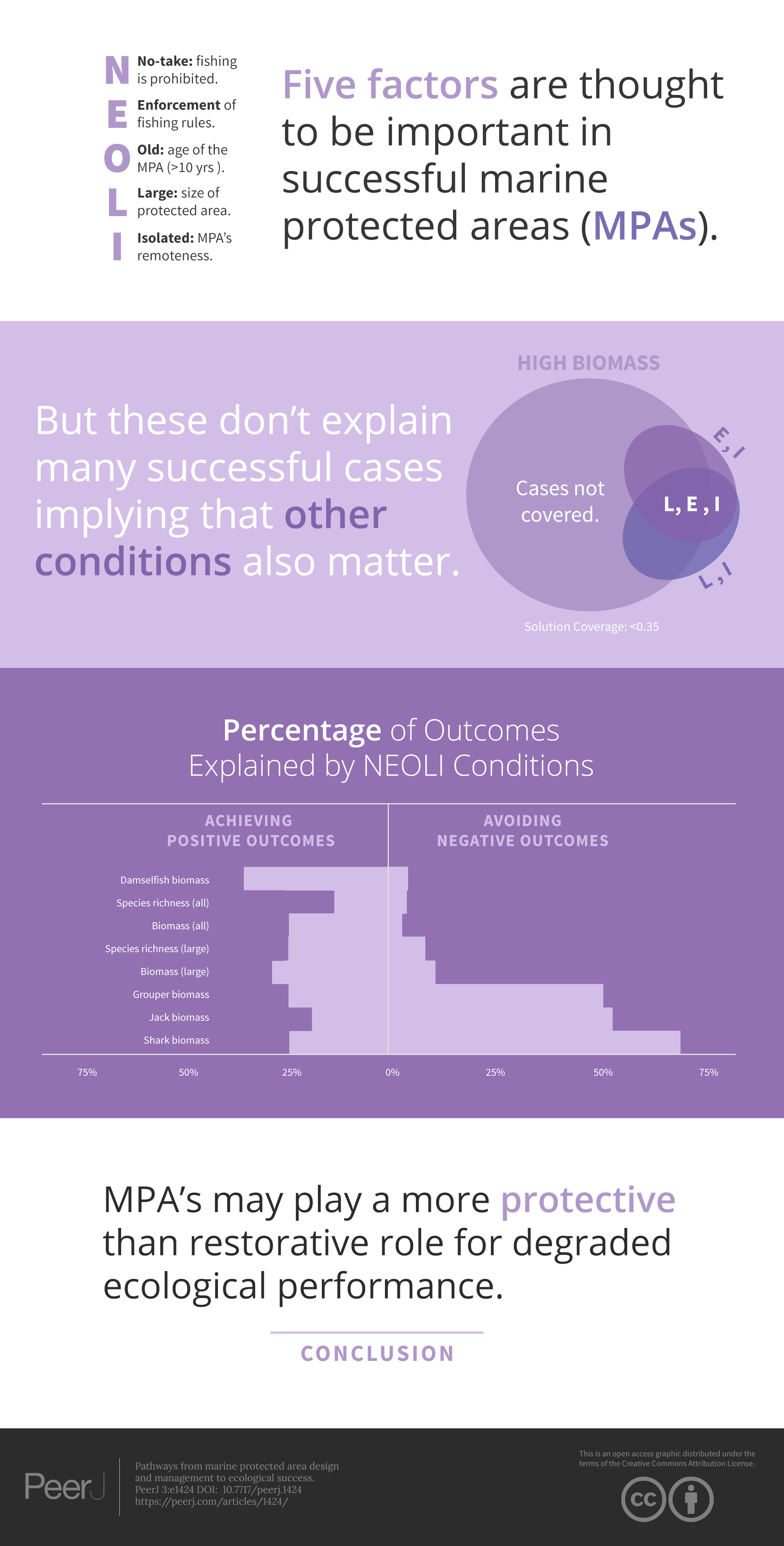LAY SUMMARY
Five main conditions often thought to influence marine protected area (MPA) performance – their size, age, and degree of isolation; and the presence of no-take fishing regulations and effective enforcement – helped explain the presence of high fish biomass and species diversity in only about one-third of global MPAs. Those conditions were, however, central in preventing further declines of large fish typically targeted in commercial fisheries. Ecological isolation was overwhelming the single most important condition affecting MPA performance, highlighting the importance of carefully selecting and designing MPAs.
ABSTRACT
Using an international dataset compiled from 121 sites in 87 marine protected areas (MPAs) globally (Edgar et al., 2014), I assessed how various configurations of design and management conditions affected MPA ecological performance, measured in terms of fish species richness and biomass. The set-theoretic approach used Boolean algebra to identify pathways that combined up to five ‘NEOLI’ (No-take, Enforced, Old, Large,Isolated) conditions and that were sufficient for achieving positive, and negative, ecological outcomes. Ecological isolation was overwhelming the most important condition affecting ecological outcomes but Old and Largewere also conditions important for achieving high levels of biomass among large fishes (jacks, groupers, sharks). Solution coverage was uniformly low (<0.35) for all models of positive ecological performance suggesting the presence of numerous other conditions and pathways to ecological success that did not involve the NEOLI conditions. Solution coverage was higher (>0.50) for negative results (i.e., the absence of high biomass) among the large commercially-exploited fishes, implying asymmetries in how MPAs may rebuild populations on the one hand and, on the other, protect against further decline. The results revealed complex interactions involving MPA design, implementation, and management conditions that affect MPA ecological performance. In general terms, the presence of no-take regulations and effective enforcement were insufficient to ensure MPA effectiveness on their own. Given the central role of ecological isolation in securing ecological benefits from MPAs, site selection in the design phase appears critical for success.
CITATION
(2015) Pathways from marine protected area design and management to ecological success. PeerJ 3:e1424 https://doi.org/10.7717/peerj.1424
